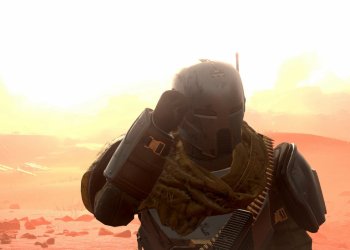Nintendo’s official specifications for the Switch 2 mention a rather mysterious “Custom processor made by NVIDIA” as its CPU and GPU. But during a developer roundtable discussion, we got some deeper insights into what this new hardware means for game developers.
Key figures like producer Kouichi Kawamoto, technical director Tetsuya Sasaki, and director Takuhiro Dohta fielded questions, via translator Raymond Elliget, about these exciting updates to the Switch hardware.
Though Sasaki noted that Nintendo typically keeps tight-lipped about hardware specs, he emphasized the focus is really on the value for customers. Nonetheless, some intriguing details were shared.
Let’s dive into what was revealed.
### DLSS and Hardware Ray Tracing Confirmed
By collaborating with Nvidia, Nintendo gains access to DLSS technology. When asked by Inverse’s Shannon Liao, Dohta confirmed that Nintendo incorporates DLSS upscaling tech and extends this utility to developers.
“Regarding the hardware’s capability to output at a maximum of 4K to TVs, it’s up to the software developers whether they want to use that as a native resolution or a smaller one with upscaling,” Dohta said. “This gives developers plenty of options.”
Moreover, Dohta affirmed that the chip is capable of hardware ray tracing, offering yet another creative tool for developers to utilize.
### Battery Life and System Processing
The official spec sheet claims that the Switch 2’s 5220 mAh battery delivers between 2 to 6.5 hours of gameplay per charge, but those figures are admittedly rough. Sasaki remarked that the actual battery life depends on the games and conditions.
Dohta mentioned that new features like GameChat introduce complexity, making the battery life more variable than the original Switch — which complicates direct comparisons.
### Original Switch Software is Emulated
In regards to backward compatibility with original Switch games and GameCube classics, the developers revealed those games are emulated — similar to Xbox’s approach.
Sasaki explained, “It’s a tricky answer, but considering it’s not solely hardware that’s doing the emulation, you could say it’s software-based.”
### Improved Bluetooth
New Joy-Cons pair with the Switch 2 using Bluetooth 3.0. When asked if player issues with multiple Bluetooth connections would persist, Sasaki had a straightforward answer: “Yes, it has improved.”
He also noted that the system’s larger size and enhanced antennas should significantly bolster connection quality. Plus, more antennas and further tweaks have been implemented.
### LCD Over OLED
The Switch 2 sports a 7.9-inch LCD display with HDR support. Although a premium model of the original Switch had an OLED screen, Sasaki pointed out that LCD technology has progressed significantly. Kawamoto added that the OLED display on the original model didn’t offer HDR, which this new LCD does.
### The Two USB Type-C Ports
When CNET’s Scott Stein asked about the possibility of the top USB-C port supporting external displays like Xreal glasses, Kawamoto clarified that only the bottom port supports video output.
“So regarding glass support, it’s not officially a Nintendo accessory, so it’s tough to provide a definitive answer,” Kawamoto said.
While the top USB-C port has been demonstrated with the new Switch 2 camera, it also serves to charge the system while in tabletop mode.








![[Title Rewrite] [Winners Announced for Free Game Giveaway] Sorry We’re Closed (Switch + PS5)](https://www.gameria.net/wp-content/uploads/2025/04/Title-Rewrite-Winners-Announced-for-Free-Game-Giveaway-Sorry-Were-360x180.jpg)
































